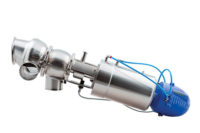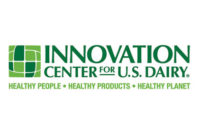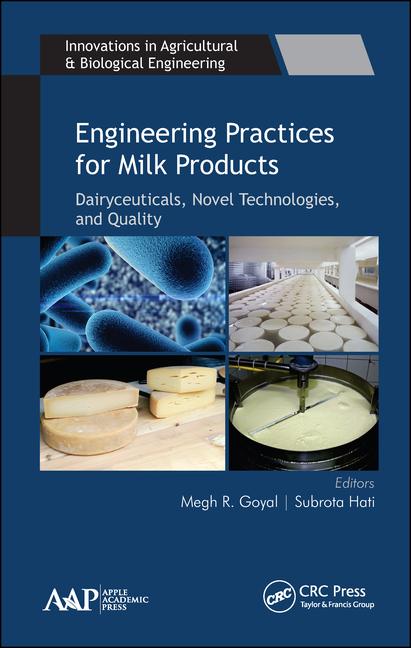Best Practices in Waste-Heat Recovery
The U.S. Environmental Protection Agency (EPA) estimates that manufacturers in the United States spend about $100 billion a year on energy costs.
The U.S. Environmental Protection Agency (EPA) estimates that manufacturers in the United States spend about $100 billion a year on energy costs. At individual plants, energy is often the highest operating cost after raw materials and labor. That’s why EPA has expanded its Energy Star program, which encourages energy efficiency, to include industrial facilities.
With global energy consumption continuing to rise - EPA expects U.S. demand to increase by 31% within 25 years - dairy processors and manufacturers are implementing energy-management programs to improve energy performance, save on operating costs and reduce greenhouse-gas emissions.
As part of an industry-wide sustainability effort, dairy processors and manufacturers recognize that an effective energy-management program starts with a top-down commitment from individual businesses, but is successful in large part due to the identification and sharing of best practices across the entire industry. Sharing best practices based on each other’s experience helps processors identify the energy-efficient practices and technologies that may work best in their plants and for their business model.
A few of these best practices fall under the category of energy recovery and recycling, which are highly cost-effective means for producing energy, and can be implemented on a broad scale to both new and existing facilities. I’d like to share some best practices and experiences from the dairy industry.
Oakhurst Dairy in Portland, Maine, captures solar energy through roof panels to preheat water to temperatures as hot as 110°F. By reducing the energy required to heat water for case washing (150°F to 160°F), the system reduces the company’s heating oil consumption by more than 5,000 gallons annually.
An extension of the project includes a hot-water-recovery system attached to the case wash. Hot water from the case wash is routed through a heat exchanger, recovering waste heat and recycling it back into the solar panels. By capturing thermal units (from the hot water) that were literally flushed down the drain, Oakhurst saves an additional 2,500 gallons of heating oil per year at a minimum.
Another successful waste-heat-recovery implementation was in the boiler system of a Wisconsin dairy. After an energy audit, the dairy identified multiple issues that caused inefficiencies in the facility’s boiler system. Among other upgrades, the dairy installed a blowdown heat-recovery system to capture heat from the boiler blowdown stream. This reduced both energy consumption and the city water required at the blowdown drain discharge point. All upgrades to the boiler system combined reduced the plant’s natural gas consumption by 10,500 MMBtu per year, for a cost savings of $39,400 annually. The plant will realize a return on its investment in 1.6 years, which is right in the middle of the one- to two-year payback period most dairies typically require for capital investments.
United Dairymen of Arizona, a cooperative of 70 dairy farmers, for example, is planning to replace electricity with natural gas at its processing facility in Tempe, Ariz., through a CHP gas turbine generator. The estimated implementation cost is $7.6 million, with a potential annual savings of $3.1 million. That’s a simple payback of 2.5 years.
According to RED, onsite cogeneration can provide a manufacturing plant with all of its thermal and electric needs, and excess power can be sold back to the electric grid.
Taking advantage of industry best practices and following these guidelines for energy management can help a dairy facility improve its energy and financial performance while distinguishing it as an environmental leader. More information on the Energy Star guidelines can be found at the Buildings and Plant tab on the www.energystar.gov website.
The U.S. Environmental Protection Agency (EPA) estimates that manufacturers in the United States spend about $100 billion a year on energy costs. At individual plants, energy is often the highest operating cost after raw materials and labor. That’s why EPA has expanded its Energy Star program, which encourages energy efficiency, to include industrial facilities.
With global energy consumption continuing to rise - EPA expects U.S. demand to increase by 31% within 25 years - dairy processors and manufacturers are implementing energy-management programs to improve energy performance, save on operating costs and reduce greenhouse-gas emissions.
As part of an industry-wide sustainability effort, dairy processors and manufacturers recognize that an effective energy-management program starts with a top-down commitment from individual businesses, but is successful in large part due to the identification and sharing of best practices across the entire industry. Sharing best practices based on each other’s experience helps processors identify the energy-efficient practices and technologies that may work best in their plants and for their business model.
A few of these best practices fall under the category of energy recovery and recycling, which are highly cost-effective means for producing energy, and can be implemented on a broad scale to both new and existing facilities. I’d like to share some best practices and experiences from the dairy industry.
Waste-heat recovery
Dairy manufacturers recover waste heat from processing equipment by capturing the energy - typically steam or hot water - thereby utilizing the thermal energy.Oakhurst Dairy in Portland, Maine, captures solar energy through roof panels to preheat water to temperatures as hot as 110°F. By reducing the energy required to heat water for case washing (150°F to 160°F), the system reduces the company’s heating oil consumption by more than 5,000 gallons annually.
An extension of the project includes a hot-water-recovery system attached to the case wash. Hot water from the case wash is routed through a heat exchanger, recovering waste heat and recycling it back into the solar panels. By capturing thermal units (from the hot water) that were literally flushed down the drain, Oakhurst saves an additional 2,500 gallons of heating oil per year at a minimum.
Another successful waste-heat-recovery implementation was in the boiler system of a Wisconsin dairy. After an energy audit, the dairy identified multiple issues that caused inefficiencies in the facility’s boiler system. Among other upgrades, the dairy installed a blowdown heat-recovery system to capture heat from the boiler blowdown stream. This reduced both energy consumption and the city water required at the blowdown drain discharge point. All upgrades to the boiler system combined reduced the plant’s natural gas consumption by 10,500 MMBtu per year, for a cost savings of $39,400 annually. The plant will realize a return on its investment in 1.6 years, which is right in the middle of the one- to two-year payback period most dairies typically require for capital investments.
Combined heat and power (CHP)
CHP is two to three times as efficient as traditional power generation because it recycles excess heat generated rather than throwing it away. Recycled Energy Development (RED), based in Westmont, Ill., works with industrial consumers and other large users of power to capture energy that is normally wasted and turn it into clean electricity and heat for operations. RED develops the concept, provides financing, technology selection, engineering, environmental permitting and construction, and then manages the operation. Studies indicate that 20% of total U.S. generating capacity could come from CHP by 2030.United Dairymen of Arizona, a cooperative of 70 dairy farmers, for example, is planning to replace electricity with natural gas at its processing facility in Tempe, Ariz., through a CHP gas turbine generator. The estimated implementation cost is $7.6 million, with a potential annual savings of $3.1 million. That’s a simple payback of 2.5 years.
According to RED, onsite cogeneration can provide a manufacturing plant with all of its thermal and electric needs, and excess power can be sold back to the electric grid.
Success in energy management
As dairy processors strive to be more efficient, reduce cost and save our global resources, it is helpful to review EPA’s seven steps for energy management, which are based on the successful practices of many Energy Star partners. They are: 1. Make a commitment, 2. Assess performance, 3. Set goals, 4. Create an action plan, 5. Implement action plan, 6. Evaluate progress and 7. Recognize achievements.Taking advantage of industry best practices and following these guidelines for energy management can help a dairy facility improve its energy and financial performance while distinguishing it as an environmental leader. More information on the Energy Star guidelines can be found at the Buildings and Plant tab on the www.energystar.gov website.
Looking for a reprint of this article?
From high-res PDFs to custom plaques, order your copy today!









